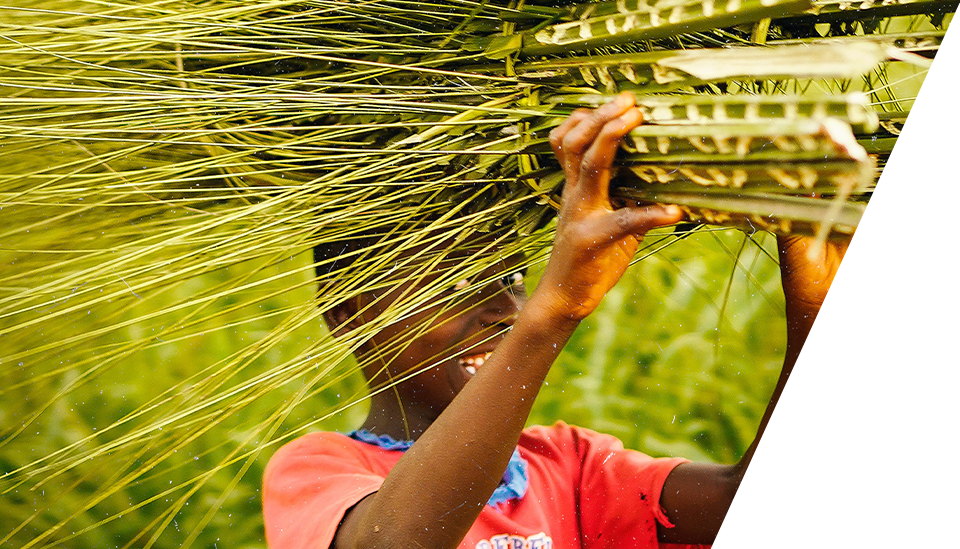6 Ways To Achieve A Hunger-Free World
Re-published with permission from wfpusa.org | 10 March 2016
A new report from the Aspen Institute outlines a vision for a future of zero hunger.
The report was authored by the Food Security Working Group—a non-partisan, international coalition chaired by Madeleine Albright and Tom Daschle. The working group’s members included experts and humanitarians from both the public and private sector, including World Food Program USA’s CEO Rick Leach.
The report, “Public and Private Sector Interventions for Global Food Security,” lays out six recommendations:
- Leverage the private sector as a partner in development.
- Support the entry of small-scale producers into global markets.
- Invest in smallholder farmers.
- Address the unique health needs of women.
- Provide adequate resources for humanitarian assistance.
- Promote the use of safety net programs.
These recommendations illustrate how many variables need to be considered in the fight to solve global hunger. As the largest hunger relief organization on the planet, the United Nations World Food Programme (WFP) supports a wide variety of programs to achieve food security in the most vulnerable communities.
In fact, WFP is already working to implement and promote many of the report’s recommendations. Here’s how:
Partnering with the Private Sector
For more than a decade, WFP has partnered with major corporations like Cargill, UPS and Caterpillar to improve its operations and get nutritious food and better tools into the hands of hungry people. Cargill, one of the largest food companies in the world, has partnered with WFP to provide more than $14 million in nutrition, health and educational support for children across Central America, Africa and Asia. UPS, an organization known for its shipping and logistics expertise, has helped WFP reduce the time it takes it takes to deliver food assistance to families and people in need, thus saving millions of lives each year. Caterpillar, the largest maker of construction and mining equipment on earth, has contributed more than $550 million to humanitarian organizations like WFP to support sustainable progress in poor farming communities worldwide.
Investing in Smallholder Farmers
In developing countries, more than 80% of the food that’s consumed is produced by smallholder farmers. They form the backbone of the agriculture system in poor nations. Unfortunately, many of these smallholder farmers lack the legal safeguards and market access required to move from subsistence farming to larger-scale commercial production. Through programs like Purchase for Progress, WFP is leveraging its purchasing power to support agricultural and market development by helping smallholder farmers grow more, sell more, and earn more so they can become more competitive players in the local and global economy.
Making Women’s Health a Priority
Persistent gender inequality means women and girls are often the first victims of hunger. This is why WFP prioritizes nutrition programs that meet the unique needs of women and girls, particularly pregnant and nursing mothers. In 2014, WFP supported the nutrition of more than 66 million women and children—the vast majority of the agency’s food assistance recipients.
Responding to Disasters
When natural disaster strikes or conflict erupts, WFP is the world’s first responder, delivering vital food relief to populations in crisis. As head of the U.N. Logistics Cluster, WFP is also responsible for transporting emergency supplies, medicine and aid workers in addition to food. The agency employs fleets of ships, planes, trucks and even mountain porters to reach the most remote and inaccessible places—no matter what it takes.
Helping Families in NEED
Safety nets—like food-for-work programs or school meals—act as “shock-absorbers” for families and communities when catastrophe strikes. When a drought destroys a family’s crops, these programs can provide immediate emergency food assistance. The same is true when the price of staple foods spikes, making adequate nutrition unaffordable for impoverished households.
WFP has helped implement safety net programs in developing countries across the planet. One successful example is Ethiopia’s Productive Safety Nets Program (PSNP), which works by paying people in need—many of whom are smallholder farmers—with cash or food to construct irrigation and terracing systems that help avert hunger in the event of a natural disaster. Today, even as a severe drought has wreaked havoc on food supplies across Ethiopia, famine has been prevented, thanks in large part to the infrastructure that the country’s safety net program built long before the drought set in.
Ultimately, it will take wide-ranging set of solutions and innovations to overcome the factors that drive food insecurity, but achieving a hunger-free world is possible. WFP is proving that everyday.
Find out how you can get involved in the fight against hunger.

